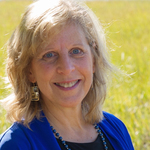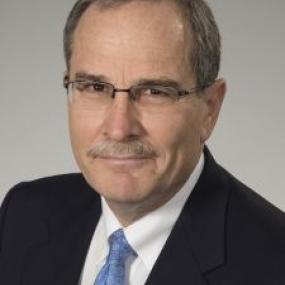Ochsner Health Expands Remote Patient Monitoring to New Patient Groups, with Improved Outcomes and Reduced Costs
Connected care solves access and convenience issues for patients; real-time data from mobile devices allows physicians to monitor patients at home and intervene when necessary.
// By Marcia Simon, APR //
 COVID escalated implementation of remote patient monitoring (RPM). Now, with the door pushed open, healthtech companies are competing to burst through and build clinical partnerships that stretch the boundaries of digital health.
COVID escalated implementation of remote patient monitoring (RPM). Now, with the door pushed open, healthtech companies are competing to burst through and build clinical partnerships that stretch the boundaries of digital health.
The potential for mobile health, which includes smartphone apps, wearables, and other monitoring devices, is massive. The percentage of physicians who feel digital health tools are an advantage for patient care grew from 85 percent in 2016 to 93 percent in 2022, according to recent findings from the American Medical Association, citing clinical outcomes and work efficiency as top factors. The AMA study found that nearly one-third of physicians across a wide range of specialties currently use remote monitoring devices for patients, up from 12 percent in 2016.

Richard Milani, MD, chief clinical transformation officer and vice chair of Cardiology, Ochsner Health
Among the earliest clinical adopters of connected health for RPM is Ochsner Health, which covers Louisiana, Mississippi, and the Gulf South, with a mission to “serve, heal, lead, educate, and innovate.” Ochsner started monitoring hypertension remotely in 2015, adding diabetes management in 2017, and then COPD, cholesterol, and pregnancy.
“People want this,” says Richard Milani, MD, chief clinical transformation officer and vice chair of Cardiology at Ochsner Health. “Connected health puts patients in control, improves efficiency of care, and ultimately saves lives.”
And because maintenance and prevention of chronic conditions ultimately serve to reduce the total cost of care, for any group of payers — from employers to insurance plans to health systems with value-based contracts — the business case for RPM is strong.
In 2021, Ochsner partnered with Louisiana’s Medicaid program to pilot an RPM program for managing diabetes and hypertension. “Results, so far, have been wonderful,” says Milani, citing reductions in emergency visits, hospitalizations, and associated costs.
For monitoring elderly patients who live alone, Ochsner’s Connected Home program installs a suite of sensors for passive data collection of a patient’s activities of daily living (ADL) that trigger alerts when an individual shows signs of illness. To protect privacy, there’s no video or audio capture.
Better Control of Chronic Conditions
“If you look at where the majority of costs are in the United States, 85 percent of all the money spent in the United States on health care is on chronic disease,” says Milani. “For any condition you’re likely to have for the rest of your life, if I [as a doctor] can have direct data coming in telling me where you are at any moment in time, and I can intervene in the moment, I can do a better job, right?”
For example, wearing a passive data collector, a cardiac patient can go about daily life, explains Milani, and an alert can be triggered when an irregularity occurs. This early detection helps to determine a course of treatment.
Additionally, with falls as the leading cause of injuries for seniors, prevention is the goal. “By looking at gait patterns, asymmetry, a patient’s step speed, step length, that is highly predictive of future falls. This was validated in a large movement study of 100,000 people conducted by Apple,” adds Milani.
Targeting Employers
Ochsner designs digital medicine programs for employers. “Employers are looking at this from a cost perspective. I’m looking at this from a clinical perspective, but the thing is, they line up because if I do a better job of controlling this disease, you’re not going to end up in the hospital and have all these other problems like strokes and things like that down the road,” says Milani. “We’ve already shown the benefits in terms of control, and now we’ve also seen the benefit in terms of cost.”
Patients Don’t Have to Be Tech-Savvy
Ochsner patients who welcome the advent of digital monitoring have access to the O Bar (O for Ochsner), with locations throughout Ochsner’s health system. The system claims it’s the first retail experience of its kind, arming digital medicine patients with tech tools and confidence that will guide them to better health. A variety of monitors and activity trackers comes with hands-on training from a technician specialist, along with help downloading and learning to use any of the more than 100 Ochsner-approved mobile health apps.
“If I have an FDA-approved cuff and I show you how to properly take your blood pressure and I tell you all the little things you need to do, then it’s actually more valuable than an in-office measurement,” Milani says, adding, “the same with glucometers for blood sugar readings. The difference now is that I can see the results in real time.” Ochsner physicians can integrate data seamlessly into the Epic EMR system.
Game Changers and Remaining Challenges
Milani believes that almost everyone today has access to a smart device regardless of economic factors or geographic location. He says that RPM allows for more frequent monitoring than a patient would have if relying solely on coming to a physician office. You don’t need internet, and the old barriers — transportation, childcare, work conflicts — are removed. As long as there’s wireless phone service, connecting to the platform is possible, Milani explains.
Through early detection and earlier interventions, health systems save money, too.
But challenges exist. Interoperability is still an issue. And competing EMR systems don’t have the ability, for now, to share data with one another, which may or may not be a major inconvenience for patients, depending on whether their doctors and specialists are part of the same health care network.
And then there’s the issue of liability, which is sometimes a hurdle for physicians on the fence about adopting digital health tools for their practice.
One thing’s for sure: a growing aging-in-place population is looking for trusted ways to stay healthy while staying home, and if given the tools — and the support to enable this — they are eager to embrace it.
“Our goal is to encourage patients to be diligent about managing a chronic condition,” says Milani. Predictive data gathered through remote patient monitoring can pinpoint increasing risks for a number of conditions. It’s information that is helpful not only to patients and their physicians, but to their caregivers as well, to allow for earlier intervention and a better overall outcome.
Marcia Simon, APR, is a communication strategist and content creator. She writes about health care, healthtech, and wellness. Email her at marcia@mseusa.com or connect at linkedIn.com/in/marciasimon.
